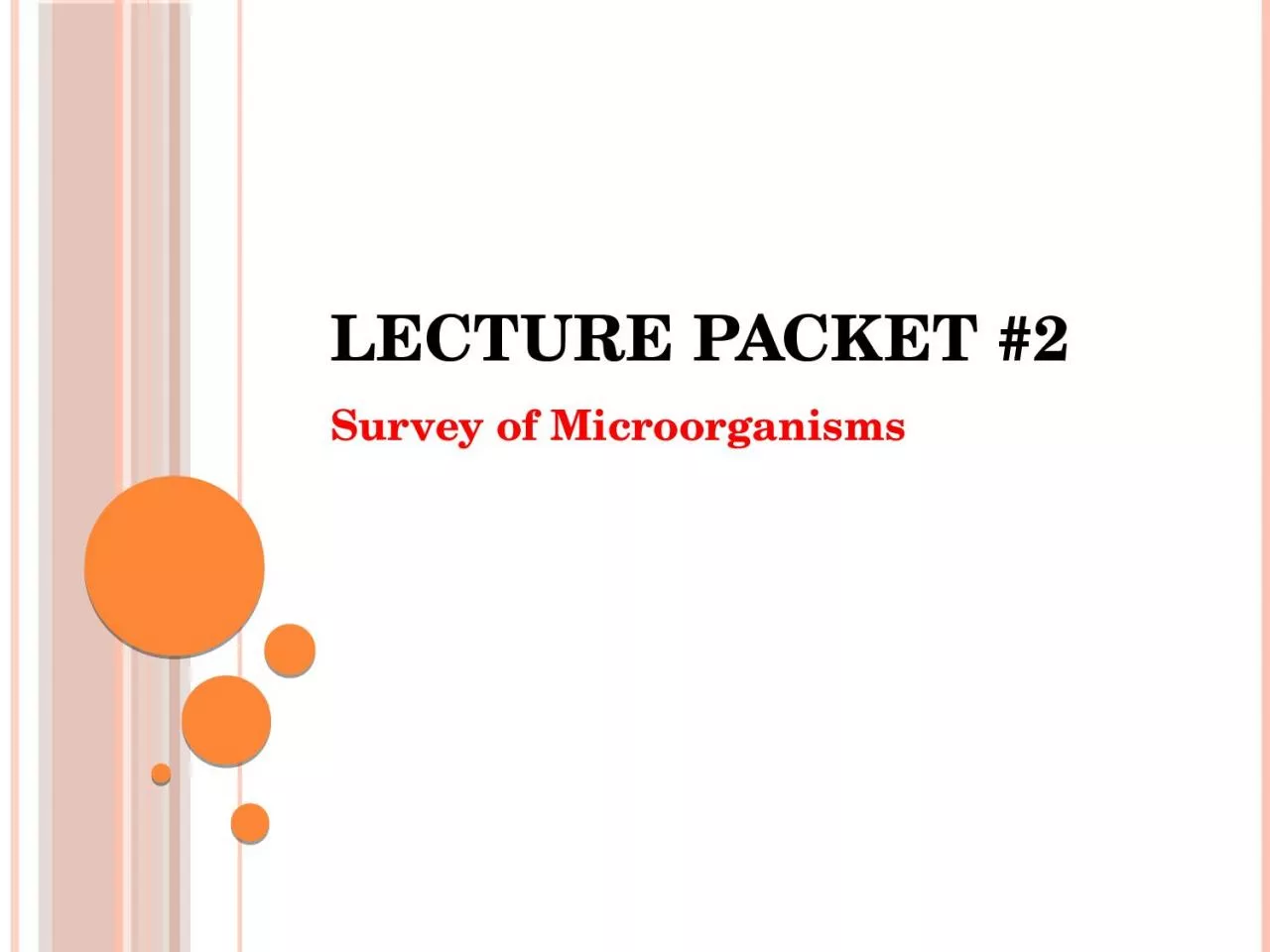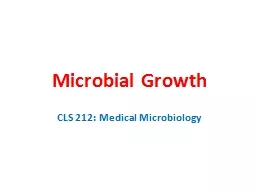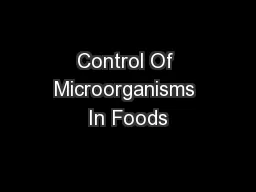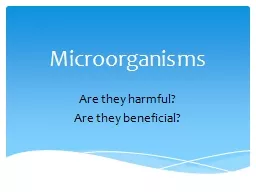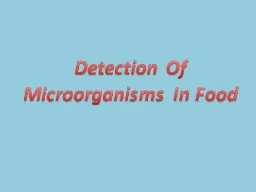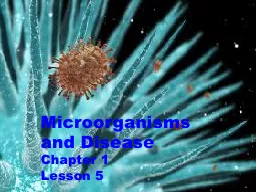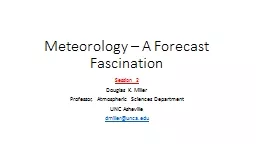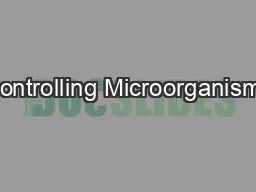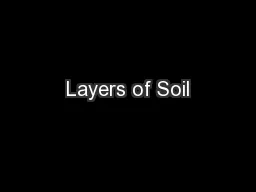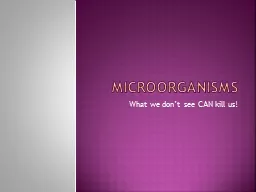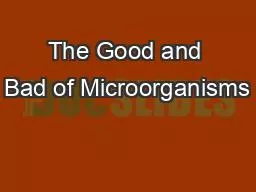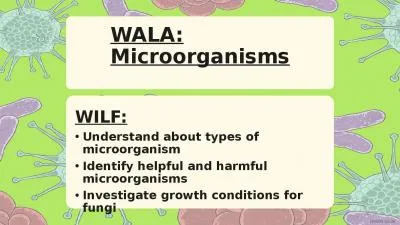PPT-LECTURE PACKET #2 Survey of Microorganisms
Author : ashley | Published Date : 2024-02-02
Test 2 Lecture Packet a survey of microorganisms A Where did bacteria come from and for how long have they been present on earth according to scientific theory
Presentation Embed Code
Download Presentation
Download Presentation The PPT/PDF document "LECTURE PACKET #2 Survey of Microorganis..." is the property of its rightful owner. Permission is granted to download and print the materials on this website for personal, non-commercial use only, and to display it on your personal computer provided you do not modify the materials and that you retain all copyright notices contained in the materials. By downloading content from our website, you accept the terms of this agreement.
LECTURE PACKET #2 Survey of Microorganisms: Transcript
Test 2 Lecture Packet a survey of microorganisms A Where did bacteria come from and for how long have they been present on earth according to scientific theory the earth is approximately how old. H I G H E N D C A P A B I L I T I E S F O R L O W E R S C A L E A P P L I C A T I O N S A P P L I C A T I O N S Small service provider session border controller SBC access and interconnect 0HPEHU57347RI573472UDFOH57526V57347657347FOXVWHU Session rou CLS 212: . Medical . Microbiology. Factors Affecting Microbial Growth. There . are some factors that affect and control the growth of microorganisms around us, in hospitals, in the laboratory, and in industrial settings. . By: Rachel Hillard RN. An advanced biology course. Biology is the study of living organisms . Microbiology is the study of very small living organisms called microorganisms or microbes. Microbes are . Introduction. The objective of controlling microorganisms in foods is to minimize their numbers or completely eliminate them from food. Several methods are used to achieve this objective by:. . * controlling access of the microorganisms in foods.. Are they harmful?. Are they beneficial?. Microorganisms. Micro. So small you can’t see it!. Organisms . It’s alive!. Which are harmful?. Which are beneficial?. Beneficial Microorganisms . Algae. grows on water and produces oxygen. March 2010. Agenda. Cisco Packet Tracer Overview . Packet Tracker Key Features . Packet Tracer 5.3 . Packet Tracer Key Benefits. Summary. Packet Tracer Overview. What is Cisco Packet Tracer?. Comprehensive networking technology teaching and learning software developed by Cisco Networking Academy. Importance. . The total microbial population in a food varies greatly and depends on:. . *The . level of sanitation . used at all phases.. . *The . degree of abuse . that leads to microbial growth. . Chapter 1. Lesson 5. Microorganisms. Microorganisms are organisms that are microscopic, or too small to be seen with just the eyes. . They can be unicellular or multicellular.. Microorganisms are EVERYWHERE!!! They are in food that you eat, on your books, and inside your body. . – A Forecast Fascination. Session 2. Douglas K. Miller. Professor, Atmospheric Sciences Department. UNC Asheville. dmiller@unca.edu. Outline. Review - Restoring balance (global scale). A tale of two cities (air pressure, continued). A. Contaminants – microbes present at a given place and time that is undesirable. B. Decontamination – the removal or destruction of contaminants. C. Terminology. 1. Sterilization. A) Process that removes all viable microorganisms including viruses & endospores. SOIL Texture. t. he . size. of the sediment particles. Largest particle. Smallest particle. Loam (best soil). LOAM—if you . mix of all . types of sediment. . ---- . for best . growth. Questions. MicroorganismS What we don’t see CAN kill us! Microorganisms Also called microbes Cannot be seen without a microscope May be non-pathogen or pathogen depending on where it is in body Microorganisms It happens every year sometimes two or three times It happens to almost everyone in every city state town and country around the world When was the last time it happened to you What Oh WILF:. Understand about types of microorganism. Identify helpful and harmful microorganisms. Investigate growth conditions for fungi. What Are Microorganisms?. Note down in your book:. Microorganisms are very tiny living things. They are so small that you need a microscope see them..
Download Document
Here is the link to download the presentation.
"LECTURE PACKET #2 Survey of Microorganisms"The content belongs to its owner. You may download and print it for personal use, without modification, and keep all copyright notices. By downloading, you agree to these terms.
Related Documents

